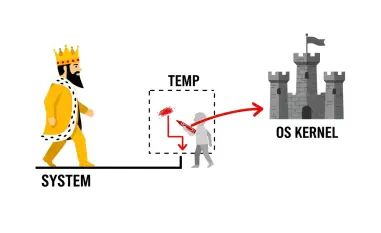In today’s rapidly changing financial landscape, effective risk management has become a critical component for banks seeking to maintain stability and capitalize on growth opportunities. The rise of digital banking, new regulations, and increasing cyber threats have all contributed to the evolving nature of risk management. This article delves into key trends, challenges, and opportunities faced by banks as they navigate these complexities, emphasizing how strategic risk management can serve as a competitive advantage.
The Impact of Digital Banking
The banking sector is undergoing a significant transformation driven by the rapid pace of digitization and the emergence of fintech innovations. Traditional banks are now adopting advanced technologies such as AI and machine learning to enhance automation, drive product innovation, and improve operational efficiency. However, while these cutting-edge technologies offer numerous advantages, they also present new challenges, including cybersecurity and data privacy risks that must be diligently managed. The gap between regulatory bodies and bank leadership often complicates this transition, as regulators struggle to keep pace with the accelerated rate of technological adoption.
As banks integrate new technologies into their operations, they must be proactive in addressing the risks associated with this digital evolution. Cybersecurity and data privacy have emerged as critical concerns, necessitating significant investments in both technological infrastructure and human expertise. Traditional banks must balance their drive for innovation with the need to fortify their defenses against increasingly sophisticated cyber threats. As such, a dual focus on innovation and security is crucial for maintaining a competitive edge in the new era of digital banking. The ability to effectively manage these challenges can position banks as frontrunners in the industry, capitalizing on growth opportunities while safeguarding their operations.
Empowering the Workforce
To effectively manage the complexities of modern risk management, banks must prioritize empowering their workforce through retraining and upskilling initiatives. Employees need to be equipped with the necessary skills to utilize advanced technological tools and understand contemporary risk management practices. This focus has expanded beyond traditional risk areas such as credit, market, and operational risks, to also encompass critical aspects like cybersecurity and data privacy. Comprehensive employee training programs and continuous learning opportunities are vital to ensuring that the workforce remains agile and capable of navigating an increasingly complex risk landscape.
Many banks still rely on outdated infrastructures that may not be resilient enough to withstand modern threats, underscoring the need for systems and process modernization. Banking institutions must invest in upgrading their technological frameworks while simultaneously fostering a culture of continuous improvement among their employees. This combination of talent development and infrastructure enhancement can better prepare banks to tackle the diverse challenges of today’s financial environment. By promoting a proactive approach to risk management and encouraging innovation, banks can empower their workforce to drive sustained growth and maintain a robust risk posture.
Strategic Growth and Performance
Modern risk management now extends beyond traditional domains to include aspects such as strategic growth, capacity investments, and reputational risk management. Chief Risk Officers (CROs) have seen their responsibilities broaden, integrating more deeply into a bank’s first line of defense. This shift signifies a move from reactive oversight to proactive strategy, facilitated by technological advancements and an increasingly complex regulatory landscape. By leveraging AI, machine learning, and other advanced technologies, banks can manage risks more intelligently and transparently, enabling them to identify and mitigate potential threats while also seizing growth opportunities.
Adopting a proactive risk management approach can significantly enhance overall bank performance. By utilizing advanced technologies to anticipate and address risks, banks can improve accuracy, efficiency, and predictive capabilities. This strategic focus allows banks to not only protect their existing operations but also drive innovation and explore new avenues for growth. Moreover, by integrating risk management into their core strategies, banks can enhance their capacity investments and strengthen their reputation in the market. In this way, effective risk management evolves from a mere protective measure to a pivotal tool for achieving sustainable competitive advantage.
Embracing Advanced Technologies
Integrating advanced technologies such as AI and machine learning into risk management processes like credit assessment, fraud detection, and macroeconomic scenario analysis can significantly enhance a bank’s accuracy and efficiency. These technologies empower banks to anticipate and mitigate potential risks more effectively, enabling them to stay ahead of the curve. For instance, AI-driven credit assessment models can offer more precise evaluations of borrowers’ creditworthiness, while machine learning algorithms can identify fraudulent activities with greater accuracy than traditional methods.
In addition to leveraging these technologies, upgrading cybersecurity infrastructure is paramount for banks to safeguard against increasingly sophisticated cyber threats. Investments in state-of-the-art solutions, regular penetration testing, and robust incident response mechanisms are essential to ensure the resilience of digital banking platforms. Furthermore, collaboration with cybersecurity experts and continuous employee training on cyber hygiene practices are critical steps in creating a robust defense framework. By adopting these advanced technologies and strengthening their cybersecurity measures, banks can enhance their ability to detect and respond to threats while fostering a secure environment for innovation.
Strengthening Regulatory Compliance
Closing the gap between regulatory bodies and banks is essential for smoother industry evolution and effective risk management. Enhanced regulatory compliance involves not only adhering to new rules but also engaging actively with regulatory bodies to influence the development of standards. This engagement facilitates a closer alignment in the adoption and regulation of new technologies, reducing friction and enabling a more seamless transition to advanced risk management practices.
Effective engagement with regulators helps banks navigate the evolving regulatory landscape more efficiently, ensuring that compliance efforts are both proactive and aligned with industry standards. By fostering open communication and collaboration with regulatory authorities, banks can gain valuable insights into regulatory expectations and contribute to shaping the future of financial regulations. This alignment between regulatory compliance and innovative risk management approaches can help banks maintain operational stability while supporting the broader objectives of financial sector resilience and growth.
Addressing Emerging Risks
Banks must continuously adapt to new and emerging risks, including those arising from environmental changes, geopolitical tensions, and technological disruptions. This dynamic risk landscape requires a flexible and responsive risk management framework capable of evolving along with external environmental shifts. By continuously monitoring and assessing potential threats, banks can develop strategies to mitigate risks and maintain operational stability.
Cultivating a strong risk culture is crucial for embedding risk management into a bank’s ethos, driving better decision-making, and promoting a proactive approach to addressing potential threats. Promoting awareness and accountability at all levels of the organization enhances the effectiveness of risk management efforts. Encouraging a culture that prioritizes risk management can lead to more informed and timely decisions, ultimately contributing to the bank’s resilience and long-term success.
Investing in Talent
The transition to advanced technologies and modern risk management tools necessitates a skilled and agile workforce. Banks must invest in talent development to ensure that employees are equipped with the necessary skills to manage contemporary risk management strategies effectively. Implementing continuous learning and upskilling opportunities enables the workforce to stay ahead of technological advancements and regulatory changes, fostering an environment that embraces innovation and adaptability.
By focusing on talent investment, banks can build a workforce that is proficient in leveraging advanced technologies and navigating the complexities of the digital age. This approach not only enhances the bank’s risk management capabilities but also positions the institution as an attractive employer for top talent. By fostering a culture of continuous improvement and embracing change, banks can better manage the challenges and opportunities presented by the evolving financial landscape.
Enhancing Governance and Oversight
In the swiftly evolving world of finance, managing risk effectively has become essential for banks aiming to sustain stability and take advantage of growth opportunities. The surge in digital banking, the introduction of new regulations, and the rise in cyber threats have all played significant roles in transforming the landscape of risk management. This article explores the major trends, challenges, and opportunities that banks encounter as they maneuver through these complexities. It highlights how adopting a strategic approach to risk management can not only help banks safeguard their operations but also act as a significant competitive edge. The importance of staying ahead by leveraging advanced risk management techniques, including the latest technology and compliance strategies, is crucial for banks to thrive in this dynamic environment.













